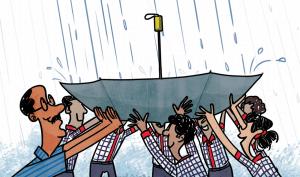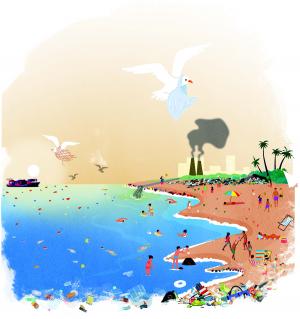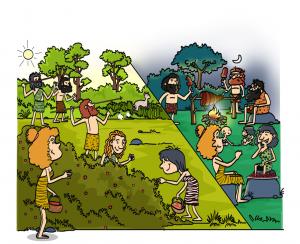
Integrating algae as an irrigation technique can boost water retention and support sustainable cultivation of medicinal plants like Brahmi.

Through rainwater harvesting, green pledges, and online campaigns, one educator proves how simple steps can create lasting ripples of change.

The Lotus Effect is a phenomena where the lotus flower repels water due to its oily surface so the water molecules roll around, collecting dirt before sliding off the leaf

Explore how plastic, oil, chemicals, and even noise are choking marine life—and what we can do to help.

Meet the students turning kayaking into a weekly mission to collect plastic waste and keep the backwaters clean — one paddle at a time.

This entry won the second prize in the Class 6–8 category of the Dialogue Dhamaka Contest. This comic contest invites young eco-enthusiasts to give Babbi her voice—capturing wit, wisdom, and critical thinking about food and climate. Participants explore Babbi’s world, learn from her adventures, and craft dialogues that bring her quirky insights into life. The most creative entries are edited and published here to celebrate their talent.

This entry won the second prize in the Class 9–10 category of the Dialogue Dhamaka Contest. This comic contest invites young eco-enthusiasts to give Babbi her voice—capturing wit, wisdom, and critical thinking about food and climate. Participants explore Babbi’s world, learn from her adventures, and craft dialogues that bring her quirky insights into life. The most creative entries are edited and published here to celebrate their talent.

This entry won the first prize in the Class 9–10 category of the Dialogue Dhamaka Contest. This comic contest invites young eco-enthusiasts to give Babbi her voice—capturing wit, wisdom, and critical thinking about food and climate. Participants explore Babbi’s world, learn from her adventures, and craft dialogues that bring her quirky insights into life. The most creative entries are edited and published here to celebrate their talent.

How I found out that minerals from hard water might be sneaking into the food we eat!

Understanding why we celebrate harvest festivals, what are their diversities, and how they connect us with our environment.

